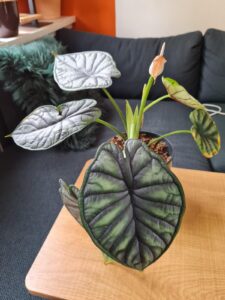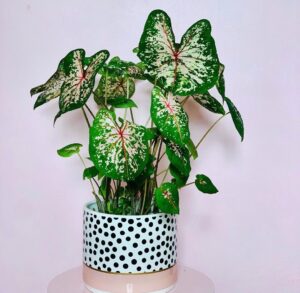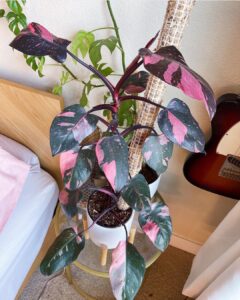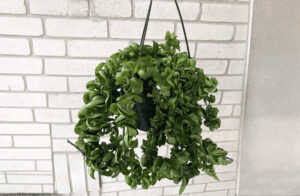
As summer reaches its peak in July, gardeners across the United States face unique challenges and opportunities depending on their region. Gardeners in Northeast, Midwest, South, and West face different challenges. By understanding these regional differences, you can make informed decisions about what to plant and ensure your plants thrive despite varying climates and conditions.
Key takeaway
| Region | Best Plants | Key Tips | Challenges |
|---|---|---|---|
| Northeast | Black-eyed Susans | Soil testing | Variable soil types |
| Coneflowers | Consistent watering | Pest management | |
| Tomatoes | Mulching | Late summer heat waves | |
| Bush beans | Succession planting | ||
| Midwest | Zinnias | Deep watering | Weather fluctuations |
| Sunflowers | Balanced fertilization | Clay soil in some areas | |
| Cucumbers | Companion planting | Potential early frosts | |
| Mums | Support structures | ||
| South | Crape myrtle | Morning watering | Extreme heat and humidity |
| Lantana | Heat-tolerant varieties | Pest proliferation | |
| Okra | Shade management | Soil drainage issues | |
| Sweet potatoes | Proper plant spacing | ||
| West | Lavender | Water conservation | Drought conditions |
| Salvia | Soil improvement | Poor soil quality | |
| Succulents | Microclimate considerations | Wildfire risks | |
| Heat-resistant tomatoes | Wind protection | Extreme temperature range |
In this article
Northeast
The Northeast offers a range of planting options in July. Some of the best plants for this region include:
- Black-eyed Susans (Rudbeckia hirta): These vibrant yellow flowers are hardy and bloom well into fall.
- Coneflowers (Echinacea): Drought-tolerant and attractive to pollinators, coneflowers add color and texture to gardens.
- Tomatoes: Fast-growing varieties like cherry tomatoes can still produce a harvest when planted in early July.
- Bush beans: Quick to mature, bush beans are ideal for late summer planting.
- Kale and other leafy greens: These cool-season crops can be planted in July for a fall harvest.
Specific tips and challenges:
Green Fingers recommends the following tips for Northeastern gardeners:
- Soil preparation: Use the soil calculator tool on Green Fingers to determine the right soil mix for your plants. Northeastern soils can vary widely in composition, so a soil test is crucial.
- Watering: While the Northeast generally receives ample rainfall, July can bring dry spells. Implement a consistent watering schedule, especially for newly planted specimens.
- Pest management: Keep an eye out for common pests like Japanese beetles and tomato hornworms. Green Fingers offers a comprehensive guide on integrated pest management strategies.
- Mulching: Apply a layer of organic mulch around plants to retain moisture and suppress weeds, which can be particularly aggressive in the warm July weather.
- Succession planting: Take advantage of the remaining growing season by planning for successive plantings of fast-maturing crops like lettuce and radishes.
Midwest
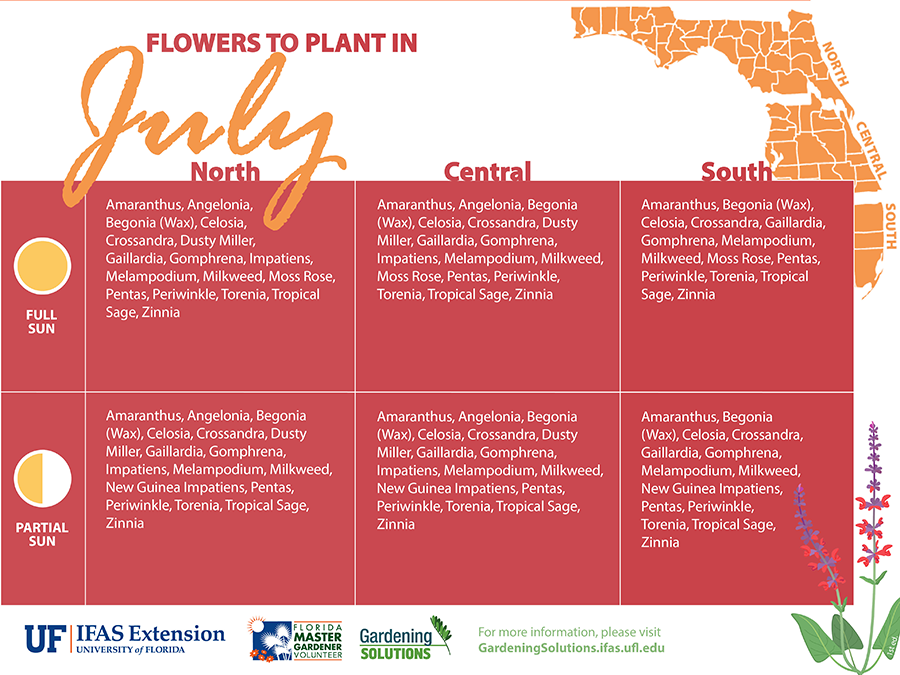
The Midwest’s continental climate, characterized by hot summers and cold winters, presents unique opportunities for July planting. Green Fingers suggests these plants:
- Zinnias: These colorful annuals thrive in full sun and bloom quickly from seed.
- Sunflowers: Plant dwarf varieties for late-summer blooms that attract birds and pollinators.
- Cucumbers: Fast-growing and heat-loving, cucumbers can still produce a harvest when planted in early July.
- Okra: This heat-tolerant vegetable performs well in the Midwest’s warm summers.
- Mums: Plant in July for beautiful fall blooms.
Midwest care tips:
Janet Brandon of Green Fingers emphasizes these care tips for Midwestern gardeners:
- Watering: Consistent watering is crucial in the Midwest’s often hot and dry July weather. Water deeply and less frequently to encourage deep root growth.
- Fertilization: Apply a balanced, slow-release fertilizer to support plant growth through the rest of the growing season. Green Fingers offers a fertilizer guide tailored to Midwestern soil types.
- Pruning: Deadhead flowers regularly to encourage continued blooming and maintain plant health.
- Support structures: Provide trellises or cages for climbing plants like cucumbers to maximize space and improve air circulation.

Green Fingers’ U.S. planting zone map is an invaluable tool for Midwestern gardeners. It helps identify specific microclimates within the region, allowing for more precise plant selection and care strategies.
South
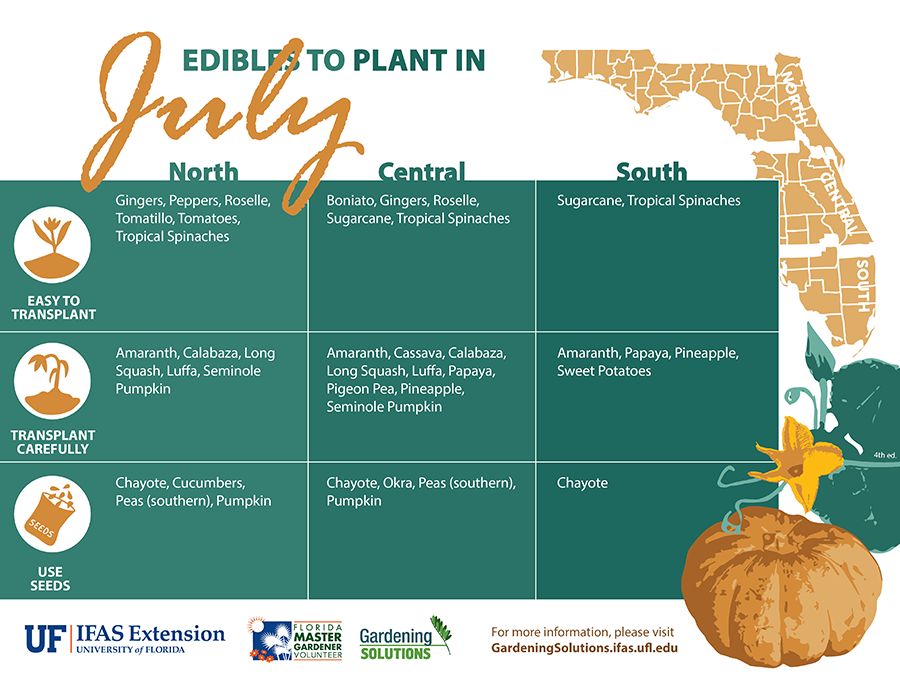
The South’s hot and humid climate presents both challenges and opportunities for July planting. Green Fingers recommends these heat-tolerant options:
- Crape myrtle: This hardy shrub or small tree produces beautiful blooms throughout the summer.
- Lantana: A drought-tolerant perennial that attracts butterflies and thrives in full sun.
- Okra: This Southern staple grows well in hot weather and can be planted through July in many areas.
- Sweet potatoes: Plant slips in July for a fall harvest of this versatile root vegetable.
- Peppers: Both sweet and hot pepper varieties perform well in Southern heat.
Dealing with heat and humidity:
Southern gardeners dealing with extreme heat and humidity should make use of:
- Shade cloth: Use shade cloth to protect sensitive plants from intense afternoon sun.
- Proper spacing: Ensure adequate spacing between plants to promote air circulation and reduce humidity-related issues.
- Raised beds: Consider using raised beds to improve drainage in areas with heavy clay soils. Green Fingers provides a guide on building and maintaining raised beds for Southern climates.
- Heat-tolerant varieties: Choose plant varieties specifically bred for heat tolerance. The Green Fingers website offers a curated list of heat-resistant plants for Southern gardens.
- Timing: Plant in the early morning or evening to minimize transplant shock from heat stress.
West
The Western United States encompasses a wide range of climates. Green Fingers suggests these plants that generally perform well across much of the region:
- Lavender: Drought-tolerant and fragrant, lavender thrives in many Western climates.
- Salvia: Many salvia varieties are adapted to the West’s varying conditions and attract pollinators.
- Succulents: Perfect for water-wise gardens, succulents come in a variety of shapes and sizes.
- Tomatoes: Heat-loving tomatoes can still be planted in early July in many Western areas.
- Herbs: Rosemary, thyme, and sage are well-suited to many Western climates.
Care tips and common issues:
- Water conservation: Implement water-wise gardening techniques, such as drip irrigation and rainwater harvesting. Green Fingers offers an in-depth guide on water conservation methods for Western gardens.
- Soil improvement: Many Western soils are alkaline and may need amendment with organic matter. Use the Green Fingers soil calculator to determine the best amendments for your specific soil type.
- Microclimates: The West’s varied topography creates numerous microclimates. Use the U.S. planting zone map on Green Fingers to identify your specific microclimate and choose plants accordingly.
- Wildfire considerations: In fire-prone areas, create defensible spaces and choose fire-resistant plants when possible. Green Fingers provides a list of fire-resistant plants suitable for Western gardens.
July planting offers unique opportunities and challenges across the United States. With proper planning and care, July can be a productive and rewarding month in the garden, setting the stage for a bountiful late summer and fall harvest.
RELATED: Top 3 Herbs to Plant in July
Happy gardening!


